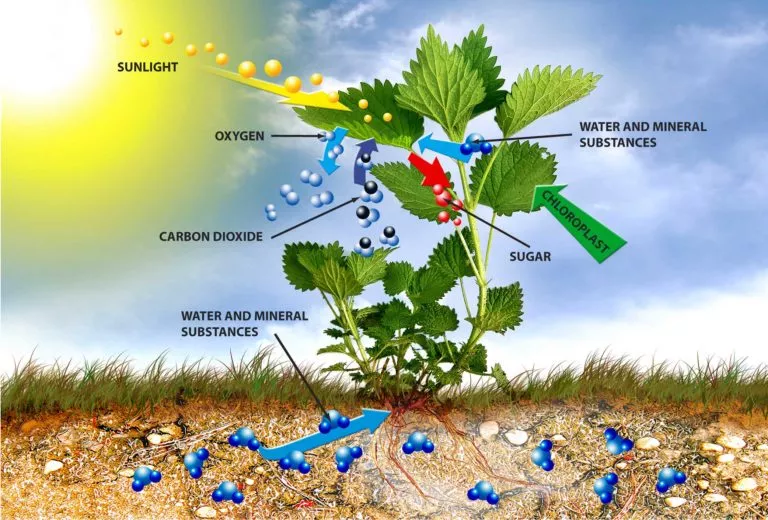Photogenesis is a fascinating natural method that plays a important position within the life and functioning of existence on Earth. Derived from the Greek words “photograph” meaning mild and “genesis” which means beginning or introduction, photogenesis refers back to the production of light or using mild in biological structures. While it’s often related to bioluminescence and photosynthesis, the time period incorporates a broader spectrum of mild-based phenomena in nature. Let’s explore what photogenesis is, the way it works, and why it subjects in biology and beyond.
What is Photogenesis?
At its center, photogenesis is the technique via which residing organisms produce or make use of light. There are two primary ways this occurs in nature:
- Photosynthesis – in which organisms, specifically flora, algae, and a few micro organism, use sunlight to transform carbon dioxide and water into strength-wealthy molecules like glucose.
- Bioluminescence – a biochemical reaction that allows sure organisms to provide their very own light, often for communique, searching, or camouflage.
Although each methods contain light, they serve very exclusive functions and appear in distinctive branches of the organic world.
Photosynthesis: Harnessing Sunlight
Photosynthesis is perhaps the most well-known and extensively studied shape of photogenesis. This procedure is critical for existence on Earth, because it offers oxygen and bureaucracy the base of the food chain. Plants, algae, and cyanobacteria use sunlight to synthesize meals from carbon dioxide and water, with oxygen released as a byproduct.
The wellknown chemical equation for photosynthesis is:
6CO₂ 6H₂O daylight → C₆H₁₂O₆ 6O₂
This response takes location in the chloroplasts of plant cells, in which chlorophyll – the inexperienced pigment – absorbs sunlight. It now not handiest fuels plant increase but additionally helps all existence paperwork dependent on plant-primarily based food assets, which includes humans and animals.
Bioluminescence: Nature’s Living Light
Unlike photosynthesis, bioluminescence refers to the capability of sure organisms to provide light internally via chemical reactions. This mild production is especially commonplace in deep-sea creatures, wherein sunlight does no longer reach. Fireflies, jellyfish, positive fungi, and a few micro organism also display this trait.
The mild is usually generated thru a response between a light-emitting molecule known as luciferin and an enzyme referred to as luciferase, within the presence of oxygen. The resulting mild can range in shade from blue and inexperienced to crimson, depending at the organism and surroundings.
Bioluminescence serves numerous functions:
- Attracting associates (e.G., fireflies flashing unique styles)
- Luring prey (e.G., anglerfish the usage of a glowing entice)
- Camouflage or protection (e.G., squid emitting bursts of mild to confuse predators)
Photogenesis in Medicine and Technology
Beyond nature, photogenesis has stimulated improvements in technological know-how, especially in medicine and environmental monitoring. One super software is photodynamic therapy, wherein mild-sensitive compounds are activated by means of light to wreck most cancers cells. This technique is minimally invasive and has become a treasured device in dermatology and oncology.
Similarly, researchers use bioluminescent markers in genetic research to trace gene expression, screen bacterial growth, or detect toxins. These glowing markers provide a non-invasive, real-time way to look at cellular strategies.
The Evolutionary Significance of Photogenesis
Photogenesis has performed a critical role inside the evolution of lifestyles. Photosynthesis, which started out extra than three billion years in the past, notably changed Earth’s atmosphere by means of generating oxygen – making it possible for more complex organisms to adapt. Bioluminescence, on the other hand, evolved independently in more than one lineages as an edition to darkish environments, like the sea depths.
These mechanisms show how existence has tailored to use light, each outside and internal, for survival and verbal exchange.
Photogenesis and the Future
Scientists continue to explore the full capacity of photogenesis. Synthetic biologists are working to create glow-in-the-darkish plants that might update streetlights, and bioluminescent bacteria that can act as living sensors in polluted environments.
As we are searching for more sustainable and progressive technology, gaining knowledge of from photogenesis could unencumber new frontiers in inexperienced electricity, smart materials, and scientific diagnostics.
Conclusion
Photogenesis is more than just a organic curiosity—it’s a testomony to nature’s ingenuity. From fueling ecosystems via photosynthesis to illuminating the darkest corners of the sea thru bioluminescence, this light-focused technique is vital to existence, science, and our destiny. By know-how and harnessing photogenesis, we open doorways to a greater sustainable and brighter international—each actually and metaphorically.
